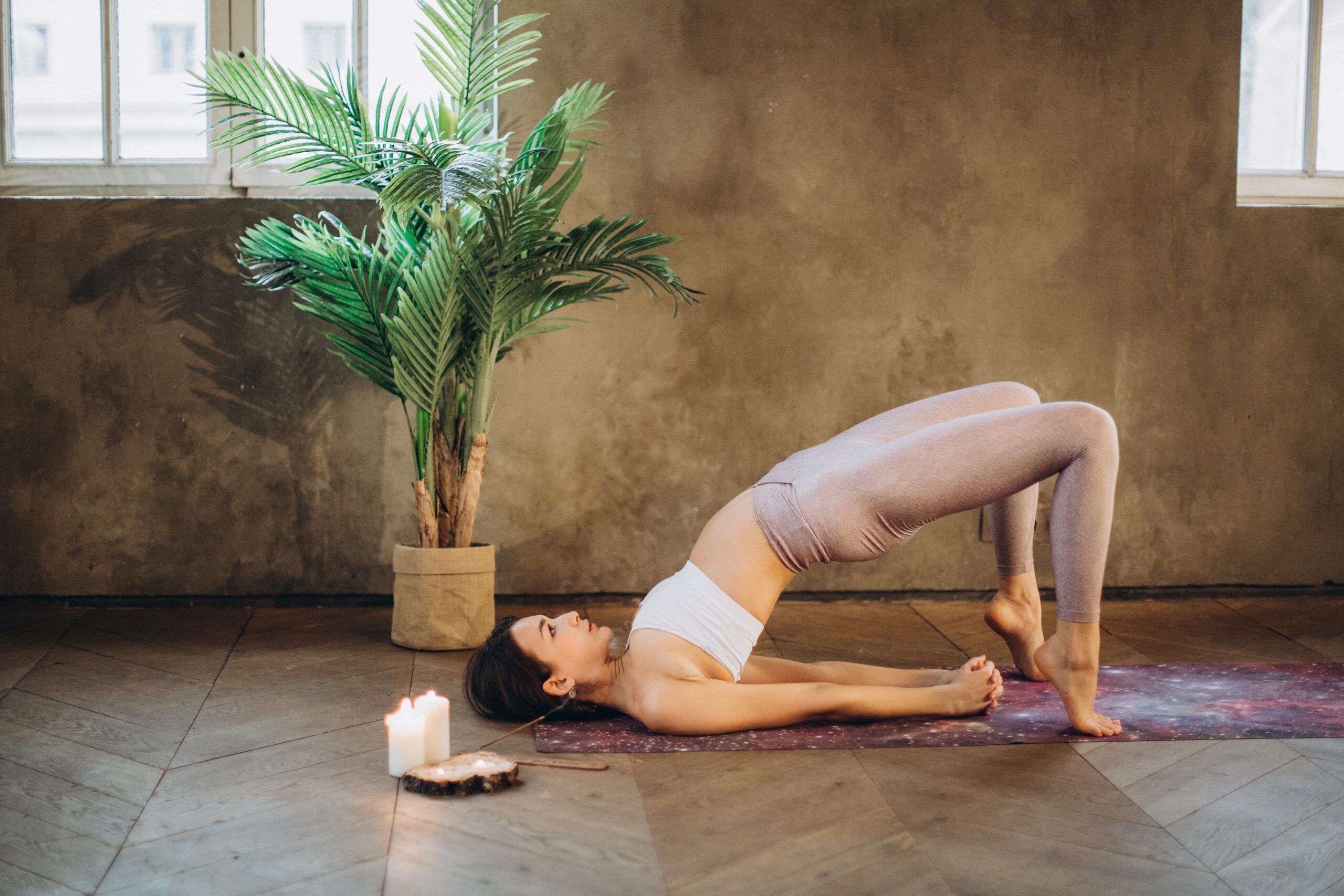Posture in Focus: Bridge Pose

Let’s comprehensively unpack the features of Bridge Pose to enjoy its full benefits in safety.
Also known as
Dvipada Pitham (‘Dvi’ = Two, ‘Pada’ = Feet, ‘Pitham’ = Stool, seat )
Setu Bandhasana (‘Setu’ = Bridge, ‘Bandha’ = Bound)
The terms are largely interchangeable. Dvipada Pitham is more commonly used in reference to the dynamic version, coming in and out of the pose on inhalation and exhalation, while Setu Bandhasana may be more commonly used in reference to holding the posture.
It’s widely understood by students as simply Bridge Pose or Two-Feet/Leg Desk Pose.
Classification
Purvatana (backbends)
Benefits & Effects
Bridge can be both strengthening and restorative, as it is building strength in the back of the body (back, glutes and hamstrings), while its mild inversionary effect calms the nervous system and can aid mood balancing, helpful for stress, anxiety and depression.
It stretches the front of the body, opening the heart and stimulating the abdominal organs (aiding digestion), lungs and thyroid, and brings warmth and energy to cold days when you might feel a bit flat.

Vinyasa krama, breath and drishti (How To…)
One of the classical ways to enter the posture is this:
- Lie on back, with legs together, palms on the floor alongside the body, chin down, eyes closed (inner gaze towards area between eyebrows).
- Bend the knees, placing the feet together close to the buttocks, and hold the ankles. Knees together.
- While inhaling, raise the hips (tiling the pelvis, lengthening the tailbone and applying your Mula Bandha, contracting your pelvic floor muscles).
- While exhaling, lower the hips the floor (rolling down the vertebrae, release your bandha).
- Release ankles and extend legs.

Alignment and things to watch for
- Knees may fall out to the sides. Engage your inner thighs to keep them symmetrical. Some people like to squeeze a block between the knees
- Toes may point outwards, check for symmetry.
- Shoulders and neck may lift off the ground, take a moment to ensure shoulders are flat on the floor and back of the neck is long.
- Hips and chest should lift high, watch for drooping hips.
- Pulling the shoulder blades together helps facilitate the lift.
- Effort without a sense ease may result in holding your breath! Let breath be your guide.
Preparation and Counterposes
Bridge is commonly used in preparation for other poses, which is why it is frequently found as part of a warm-up or cool-down sequence. In a warm-up, the Downward Dogs and gentle Baby Cobra lifts in a warming Sun Salutation can be helpful.
Bridge may assist you prepare for poses such as Supported Shoulderstand or Wheel (not suitable for beginners). It also acts a nice counterpose after Plough.
To counterpose Bridge pose itself, you may like to hug the knees into the chest, take Reclining Butterfly or some reclining spinal twists.
Modifications and Adaptations
Take it down a notch by:
- Placing a blanket under the shoulders
- After lifting hips, slide a block or bolster under the base of the spine to let your weight rest in a Supported Bridge.
Take it up a notch and experiment by:
- Lift the heels off the floor
- Lift one leg straight up towards the ceiling, ensuring hips do not drop
- Clasp your hands together under the back and draw the shoulder blades close together, aiding the chest to lift higher
- Advanced practitioners can bring the feet and legs together and extend the legs out straight, bringing hands to the hips for support
Contraindications
People with neck or shoulder injury are best advised to practise under the supervision of an experienced teacher or yoga therapist.
Written by Nicole Small, The Yoga Institute
Learn more about:
